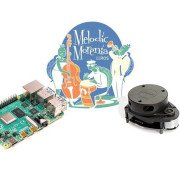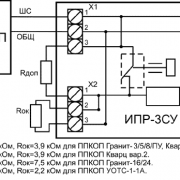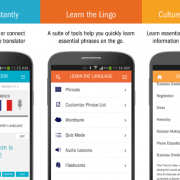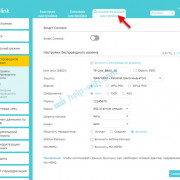Windows 10 iot core dashboard
Содержание:
- Customized boards
- Примеры быстрого запуска
- What is Windows IoT Enterprise?
- Windows 10 IoT Core Features by Processor Family
- Различия между Windows 10 Desktop и Windows 10 IoT Базовая
- Languages in OS
- Установка на eMMC (Up Squared и другие устройства Intel)
- Why Do Customer Choose Windows IoT Enterprise?
- Raspbian против Windows 10 IoT Core
- Documentation Overview
- Using the samples
- What is Windows IoT Enterprise?
- What is Windows IoT Enterprise?
- Why Do Customer Choose Windows IoT Enterprise?
- 2016: Windows 10 IoT Enterprise 2016
- My Devices
Customized boards
If an off-the-shelf device is in a form factor that includes the connectivity options that work for your scenarios, that will often be the most cost- and time-effective choice.
For most people, developing a complete custom board would make sense when the product is expected to be sold in volumes greater than tens, or even hundreds, of thousands of units. For smaller volumes, using a SoM and designing a custom carrier board, instead of designing a completely new board, can significantly reduce your cost and time-to-market, as well as streamlining software development and integration.
Each of the platforms has unique quirks that need attention during implementation. Below are some suggestions on how to get started. And while there are many companies building on Windows 10 IoT Core, here is a list of some that have proven experience working with Windows 10 IoT Core:
Raspberry Pi-derived custom design
Element 14 offers board customization service for Raspberry Pi to allow you to add or remove connectivity options. If you also need to make customizations to the BSP, you can leverage the open source BSP code on GitHub.
Intel-based custom design
There is a vibrant ecosystem of experienced Intel device builders for Windows you can work with. An Intel device designed to run Windows 10 IoT Core has a couple of differences from the more common PCs:
- If you need to provide user mode Universal Windows Platform (UWP) API access to simple buses like I2C, GPIO and SPI, you need make sure that ACPI table in your UEFI firmware contains appropriate entries for RHProxy. Please refer to user mode access for more information.
- You must ensure that the SMBIOS in the firmware contains information as listed in OEM License Requirement.
If you are building your own board, please contact your BIOS vendor if you need guidance on ACPI or SMBIOS changes.
Experienced partners
- Aaeon
- Advantech — buy@advantech.tw
- Kontron — martin.unverdorben@kontron.com
- Nexcom
Qualcomm DragonBoard 410c (APQ8016)-based custom design
Binary BSP for DragonBoard 410c (based on Qualcomm AQP8016 SoC) can be downloaded from Qualcomm Developer Network.
The BSP package includes the source code for ACPI to allow for simple hardware customizations that only require ACPI changes.
Important
If you need additional hardware customizations, such as using a specific MIPI-DSI display panel, enabling Platform Secure Boot, RF calibration and certification (eg. FCC, CE), you’ll need become a Qualcomm BSP source code licensee, or to work with a provider that has access (see Experienced partners below).
Recommendations:
- If possible, work with an experienced SoM vendor to enable customized design.
- If you’re building a custom board, work with a SoM vendor or an experienced Qualcomm BSP customization service provider, such as Intrinsyc or Thundersoft for BSP customization and design assistance.
- If you expect to have very high volume (millions), contact Qualcomm.
Experienced partners
- Intrinsyc — Mark Waldenberg (mwaldenberg@intrinsyc.com)
- Keith & Koep — contact@keith-koep.com
- Reycom — welcome@reycom.swiss
- Unitech — Sam (saml@tw.ute.com); Perry (perryt@te.ute.com)
NXP preview
NXP support for Windows 10 IoT Core is in public preview. For more information, the access the BSP, or to find a hardware partner, please go to the NXP SoC page.
You can also reach out to partners we’re working with:
- Advantech RSB-4411 — buy@advantech.tw
- Keith & Koep pConXS with Trizeps VII — contact@keith-koep.com
- Kontron SMARC-sAMX6i — Martin Unverdorben (martin.unverdorben@kontron.com)
- Solid Run Hummingboard Edge- Ilya Viten (ilya@solid-run.com)
- Geniatech SoM-iMX6Q-Q7 & SoM-iMX7D — Mike Decker (mike.decker@geniatech.com) or Fang Jijun (Fjj@geniatech.com)
- VIA VAB-820 — Michael Fox (MichaelFox@via.com.tw) or Dream Ku (dreamku@via.com.tw)
- Phytec phyBOARD-i.MX7 — Brad Dodson (sales@phytec.com)
Примеры быстрого запуска
Для примеров быстрого запуска не требуется компиляция кода, установка Visual Studio или Загрузка пакета SDK. Они отлично подходят для быстрого извлечения того, что может сделать IoT Core.
Сетевой объемный принтер
Используйте пример «сетевой объемный принтер», чтобы подключить 3D-принтер к доске, чтобы он мог быть обнаружен в домашней сети.

превратите устройство Windows 10 IoT Базовая в интернет радио, которое можно контролировать из любой точки дома.

Блокировка Интернета вещей (Core)
Пример блокирования Интернета вещей позволяет программе Raspberry Pi2 или 3, а также Raspberry Pi, используя редактор «Block» из браузера.

What is Windows IoT Enterprise?
Windows IoT Enterprise is a full version of Windows Enterprise that delivers enterprise manageability and security to IoT solutions. Windows IoT Enterprise shares all the benefits of the worldwide Windows ecosystem. It is a binary equivalent to Windows Enterprise, so you can use the same familiar development and management tools as client PCs and laptops. However, when it comes to licensing and distribution, the desktop version and IoT versions differ. Today there are two releases of Windows IoT Enterprise: Windows 10 IoT Enterprise and Windows 11 IoT Enterprise.
Note
Windows 10 IoT Enterprise offers both LTSC and SAC options, and OEMs can choose the one they need for their devices. At this time Windows 11 IoT Enterprise is only available as an . For more information on how to reach out to a Windows IoT Distributor or how to purchase a license, review Licensing & Usage.
Windows 10 IoT Core Features by Processor Family
Note
This list takes into consideration processors that are in non-commercial public preview.
To help you select the right platform for your device, the table below shows the features that are supported by processor family with Windows 10 IoT Core. All features listed below are supported in Windows 10 IoT Core, however some SoCs may not have the specific IP included in their design, and are such indicated with «N/A». In such cases, a third party solution can be incorporated into the design to provide the required functionality. In a limited number of cases where a Windows 10 IoT Core feature is not implemented on a processor, the entry is left blank.
Различия между Windows 10 Desktop и Windows 10 IoT Базовая
Различия в доступности функций в версиях Windows Desktop и IoT Базовая
- Папка «Входящие» для Кортаны теперь недоступна в Windows 10 IoT Базовая, начиная с версии 1809 (17763). Если вам нужно быстро вывести на рынок устройства с поддержкой голосового взаимодействия, вы можете интегрировать поддержку Кортаны в устройства с помощью предварительной версии пакета SDK для устройств с Кортаной.
- API FileOpenPicker не поддерживается в Windows 10 IoT Базовая. Чтобы обращаться к локальным дискам или съемным носителям, эту функцию нужно реализовать в самом приложении.
- Устройство под управлением Windows 10 IoT Базовая в стандартной конфигурации будет загружать приложение по умолчанию, а не интерфейс настольного компьютера. Но для коммерческого использования необходимо заменить это приложение по умолчанию специализированным приложением или модифицированным приложением по умолчанию. Это приложение не только предоставляет удобную оболочку для взаимодействия после загрузки, но и позволяет использовать для приложения открытый код, чтобы вы могли применять эти функции для установки и запуска собственных пользовательских приложений с автоматической настройкой.
Различия в поддержке драйверов
- Windows 10 Desktop поддерживает большее количество драйверов, чем Windows 10 IoT Базовая. Чтобы те же устройства работали в Windows 10 IoT Базовая, может потребоваться компиляция драйвера из исходного кода для конкретного устройства Windows 10 IoT Базовая или другой обходной путь, особенно при работе с архитектурой ARM.
- Для libusb в Windows 10 IoT Базовая (ARM) не существует стандартного драйвера. Вам потребуется скомпилировать его из исходного кода для использования в архитектуре ARM.
Различия в наборе доступных реестров
На рабочем столе есть параметр «Автоматически скрыть полосы прокрутки в Windows», который вы можете отключить. Он управляется следующим значением реестра:
- Этот раздел реестра по умолчанию не существует на устройствах с Windows 10 IoT Базовая. Если вам нужен раздел реестра Dynamic Scrollbars, его придется добавить самостоятельно.
- Чтобы автоматически скрывать полосы прокрутки в приложении универсальной платформы Windows, добавьте раздел DynamicScrollbars и присвойте ему значение 1, как показано ниже:
Этот раздел реестра нужно настраивать из учетной записи по умолчанию. Если параметр ScrollViewer XAML имеет значение Visible, значение 0 в параметре реестра приведет к отображению полосы прокрутки независимо от того, требуется ли для содержимого отображение полос прокрутки в пользовательском интерфейсе. Значение 1 в параметре реестра сохраняет полосу прокрутки скрытой, пока отсутствует содержимое достаточного объема.
Наконец, если параметр ScrollViewer XAML имеет значение Auto, при значении 0 для параметра реестра полная полоса прокрутки будет отображаться только при наличии содержимого достаточного объема. Если параметр реестра имеет значение 1, полоса прокрутки будет отображаться при наличии содержимого или скрываться при отсутствии содержимого.
Поддержка разных команд
- Команда PowerShell Remove-AppxPackage работает в версии Desktop, но не работает в Windows 10 IoT Базовая.
- Универсальным приложениям Windows доступны не все папки на устройстве. В Windows 10 IoT Базовая вы можете использовать средство FolderPermissions, чтобы предоставить приложениям UWP доступ к папке. Например, запустите команду FolderPermissions c:\test -e, чтобы предоставить приложениям универсальной платформы Windows доступ к папке c:\test. В версии Desktop так сделать нельзя.
Все отличия, описанные в этой статье, могут потерять свою актуальность в будущем, так как Windows 10 IoT Базовая постоянно обновляется.
Languages in OS
Windows 10 IoTCore kits now include the language resources for the following languages:
These language resources contain UI strings, speech language, and voices (speech synthesis). Windows IoT images can be built with one or more of these resources and they must be specified during the image time and cannot be modified later. Note that UI language-related resources are independent than speech language and voice resources.
Specifying Speech Data resources
In the OEM Input xml file, the required speech data resources are specified as shown below,
Note
By default, en-US speech data is included in the image.
Samples
- See MultiLangSample for multiple languages support
- See SingleLangSample
Note that when the boot UI language is changed, the administrator account name is also translated in the boot UI language. So, in fr-FR it is administrateur. See OEMCustomization.cmd
for fr-FR language with en-US as fallback language.
Установка на eMMC (Up Squared и другие устройства Intel)
Скачивание и установка средств
- Скачайте и установите на свой компьютер комплект средств для развертывания и оценки Windows (Windows ADK) для используемой вами версии Windows 10.
- Скачайте и установите надстройку среды предустановки Windows для ADK.
Создание образа среды предустановки Windows для установки с USB-накопителя
- Вставьте USB-накопитель в компьютер.
- Запустите среду средств развертывания и создания образов от имени администратора. Путь установки по умолчанию ― .
- Скопируйте файлы среды предустановки Windows с помощью команд, описанных здесь: . Необходимо указать архитектуру x86, AMD64 или ARM (например, ).
- Установите среду предустановки Windows на USB-устройство флэш-памяти с помощью команд . Необходимо указать целевой USB-накопитель (например ).
- Скачайте образ Windows 10 IoT Базовая. Для этого дважды щелкните скачанный ISO-файл и укажите подключенный виртуальный CD-диск.
- Этот диск будет содержать файл установщика (MSI). Дважды щелкните его. При этом на компьютере в папке будет создан новый каталог с файлом образа .
- Скачайте, распакуйте и скопируйте скрипт установщика eMMC в корневой каталог USB-накопителя вместе с образом FFU.
- Подключите USB-накопитель, мышь и клавиатуру к USB-концентратору. Подключите к устройству монитор через разъем HDMI, а также USB-концентратор и источник питания.
- При необходимости откройте настройки BIOS устройства. В качестве операционной системы выберите Windows и настройте загрузку с USB-накопителя. После перезагрузки системы отобразится командная строка среды предустановки Windows. Перейдите в строке к USB-накопителю. Обычно ему присвоена буква C: или D:, но может использоваться и другая буква.
- Запустите скрипт установщика eMMC для установки образа Windows 10 IoT Базовая в eMMC-память устройства. По завершении нажмите любую клавишу и запустите . Должна загрузиться ОС Windows 10 IoT Базовая, начаться настройка и загрузка приложения по умолчанию.
Примечание
Убедитесь, что устройство теперь загружается из памяти eMMC. Для этого снова откройте настройки BIOS и настройте загрузку с жесткого диска, а не с USB-накопителя.
Why Do Customer Choose Windows IoT Enterprise?
There are three main reasons why customers choose to develop with Windows IoT Enterprise:
- Productive — Leverage existing knowledge to build and manage Windows IoT Enterprise devices with powerful tools and technologies to quickly unlock data and drive digital transformation.
- Trusted — Windows IoT Enterprise helps you build IoT solutions that you can trust, keeping your devices, data, and identities secure and giving you peace of mind.
- Smart — Windows IoT Enterprise helps you connect your devices to each other, your network, and the cloud, so you can use data to drive real business insight and create new business opportunities
Tip
If you are building any kind of OEM style appliance, such as a point-of-sale or retail device, industrial automation equipment, digital signage, medical equipment or any appliance with a screen, Windows IoT Enterprise is the solution for you.
See how our customers are using Windows IoT Enterprise to accomplish their business goals.
Raspbian против Windows 10 IoT Core
- Raspbian — это операционная система, разработанная в основном для плат Raspberry Pi; Windows 10 IoT Core работает на различных одноплатных компьютерах
- Raspbian — это программное обеспечение с открытым исходным кодом, построенное на Debian; Windows 10 IoT Core — закрытая проприетарная операционная система от Microsoft.
- Raspbian поставляется с примерно 3500 модулями, так что программисты могут сэкономить время при создании приложений для плат Raspberry Pi; В Windows 10 IoT Core таких модулей нет
- Raspbian — это полноценная операционная система для Raspberry, тогда как Windows 10 IoT Core — это сильно урезанная операционная система для различных одноплатных компьютеров.
- Raspbian можно настроить и настроить по желанию пользователя, в то время как Windows 10 IoT Core требует компьютер с Windows 10 для установки, изменения и даже для удаления приложений на Raspberry Pi.
- Многие приложения могут работать на переднем плане с Raspbian, в то время как только одно приложение может работать на переднем плане (другие приложения могут работать в фоновом режиме)
- Raspbian поставляется с очень поддерживающим сообществом, которое помогает операционной системе; На данный момент Windows 10 IoT не имеет специальной поддержки.
Windows 10 IoT Core — основные функции
Windows 10 IoT Core, похоже, разрабатывается не только для Raspberry Pi. Я пришел к такому выводу, потому что Microsoft не выпускала никаких обновлений для Raspberry Pi 3B + и более поздних версий. На момент написания этой статьи невозможно было прошить Windows 10 IoT Core на Raspberry Pi 4.
Но IoT Core наверняка работает на многих других одноплатных компьютерах. Проблема и преимущество использования Windows 10 IoT в том, что для прошивки одной платы вам понадобится компьютер с Windows 10. Это дает вам больший графический интерфейс для работы, но вы не можете напрямую устанавливать приложения на одноплатные компьютеры. Панель мониторинга Windows IoT вам понадобится даже для незначительных изменений или модификаций.
Для других ОС, связанных с одноплатными компьютерами, вам, возможно, придется изучить команды командной строки для настройки и прошивки вашего приложения на плате с помощью SD-карты.
Еще одна проблема с Windows 10 IoT Core заключается в том, что вы можете отображать на переднем плане только одно приложение. Однако он может запускать многие другие в фоновом режиме.
Raspbian — Основные функции
Raspbian — это операционная система, созданная энтузиастами Raspberry Pi с помощью Debian. Raspbian никоим образом не связан с Raspberry Pi Foundation, британской благотворительной организацией, целью которой является обучение людей компьютерным технологиям и упрощение доступа к компьютерному образованию.
Это операционная система с открытым исходным кодом, созданная для того, чтобы стать наиболее часто используемой ОС на одноплатных компьютерах, особенно на платах Raspberry Pi. Raspbian столкнется с проблемами, когда будет писать на отдельных досках других компаний.
Выше приведены некоторые заметные особенности и различия между Raspbian и Windows 10 IoT Core. Жду ваших комментариев по поводу сравнения.
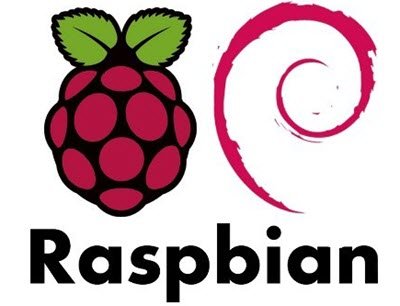
Documentation Overview
This documentation set will cover the technical breakdown of what’s included when you choose to use Windows IoT Enterprise.
Hardware Guidance
This section provides insight into the hardware needed to run Windows IoT Enterprise as your device’s OS.
Articles include:
- Hardware Requirements
- Selecting SoCs and Custom Boards
Quickstarts
This section provides quick tutorials on how to get started with Windows IoT Enterprise.
Articles include:
How to Start Prototyping
Kiosk Mode
This section walks users through the features and functionalities of Kiosk Mode and how to enable those features on Windows IoT Enterprise.
Articles include:
- Kiosk Mode Overview
- Assigned access single-app kiosk mode
- Assigned access multi-app kiosk mode
- Configure Shell Launcher
Advanced Lockdown Features
This section highlights how to create a lock-down environment with Windows IoT Enterprise OS features.
Articles include:
- Application Control
- Manage the Edge Swipe Policy
- Put in Place Device Safeguards
- Use a Keyboard Filter
- Explore the Unified Write Filter
- Enable Hibernate Once, Resume Many (HORM)
Branding Features
This section reviews how to create a custom user-experience that highlights your brand.
Articles include:
- Enable Custom Logon
- Manage Microsoft Store Access
- Control Page Visibility
- Configure Layout Control
- Enable Unbranded Boot
- Manage Update Notification
Device Management
Learn more about the device management solutions you can take advantage of with Windows IoT Enterprise.
Articles include:
- Device Management Overview
- Manage OS Updates
- Manage App Updates
- Reset & Recovery
IoT Device Features
This section gives an overview of many of the built-in functionalities of Windows IoT Enterprise devices.
Articles include:
- Windows IoT Security
- Enable Embedded Mode
- Configure Device Drivers
- Bus Providers
- Manage Network Service Controls
- Enable On-Screen Keyboard
- Privacy Features
- Accessibility Features
Commercialization
Learn how to commercialize your Windows IoT Enterprise devices.
Articles include:
- Explore Licensing Options (LTSC, SAC)
- Windows IoT Enterprise Manufacturing Guide
Additional Resources
These resources provide additional information and support to our customers and partners.
Articles include:
- Azure IoT Edge for Linux on Windows
- Downloads
- Features by Release
- Frequently Asked Questions
- Contact Us
Using the samples
The easiest way to use these samples without using Git is to download the zip file containing the current version (using the following link or by clicking the «Download ZIP» button on the repo page). You can then unzip the entire archive and use the samples in Visual Studio 2017.
Notes:
- Before you unzip the archive, right-click it, select Properties, and then select Unblock.
- Be sure to unzip the entire archive, and not just individual samples. The samples all depend on the SharedContent folder in the archive.
- In Visual Studio 2017, the platform target defaults to ARM, so be sure to change that to x64 or x86 if you want to test on a non-ARM device.
The samples use Linked files in Visual Studio to reduce duplication of common files, including sample template files and image assets. These common files are stored in the SharedContent folder at the root of the repository, and are referred to in the project files using links.
Reminder: If you unzip individual samples, they will not build due to references to other portions of the ZIP file that were not unzipped. You must unzip the entire archive if you intend to build the samples.
What is Windows IoT Enterprise?
Windows IoT Enterprise is a full version of Windows Enterprise that delivers enterprise manageability and security to IoT solutions. Windows IoT Enterprise shares all the benefits of the worldwide Windows ecosystem. It is a binary equivalent to Windows Enterprise, so you can use the same familiar development and management tools as client PCs and laptops. However, when it comes to licensing and distribution, the desktop version and IoT versions differ. Today there are two releases of Windows IoT Enterprise: Windows 10 IoT Enterprise and Windows 11 IoT Enterprise.
Note
Windows 10 IoT Enterprise offers both LTSC and SAC options, and OEMs can choose the one they need for their devices. At this time Windows 11 IoT Enterprise is only available as an . For more information on how to reach out to a Windows IoT Distributor or how to purchase a license, review Licensing & Usage.
What is Windows IoT Enterprise?
Windows IoT Enterprise is a full version of Windows Enterprise that delivers enterprise manageability and security to IoT solutions. Windows IoT Enterprise shares all the benefits of the worldwide Windows ecosystem. It is a binary equivalent to Windows Enterprise, so you can use the same familiar development and management tools as client PCs and laptops. However, when it comes to licensing and distribution, the desktop version and IoT versions differ. Today there are two releases of Windows IoT Enterprise: Windows 10 IoT Enterprise and Windows 11 IoT Enterprise.
Note
Windows 10 IoT Enterprise offers both LTSC and SAC options, and OEMs can choose the one they need for their devices. At this time Windows 11 IoT Enterprise is only available as an . For more information on how to reach out to a Windows IoT Distributor or how to purchase a license, review Licensing & Usage.
Why Do Customer Choose Windows IoT Enterprise?
There are three main reasons why customers choose to develop with Windows IoT Enterprise:
- Productive — Leverage existing knowledge to build and manage Windows IoT Enterprise devices with powerful tools and technologies to quickly unlock data and drive digital transformation.
- Trusted — Windows IoT Enterprise helps you build IoT solutions that you can trust, keeping your devices, data, and identities secure and giving you peace of mind.
- Smart — Windows IoT Enterprise helps you connect your devices to each other, your network, and the cloud, so you can use data to drive real business insight and create new business opportunities
Tip
If you are building any kind of OEM style appliance, such as a point-of-sale or retail device, industrial automation equipment, digital signage, medical equipment or any appliance with a screen, Windows IoT Enterprise is the solution for you.
See how our customers are using Windows IoT Enterprise to accomplish their business goals.
2016: Windows 10 IoT Enterprise 2016
В конце июля 2016 года стало известно о доступности для заказа у дистрибьюторов с 1 августа 2016 года обновленного релиза Embedded-версии Windows 10, под именем Windows 10 IoT Enterprise 2016.
Этот релиз embedded-вариант релиза Windows 10 «Anniversary Update» (build version 1607), известной под кодовым именем Red Stone .
Помимо технических улучшений, аналогичных «настольной» версии и касающихся в основном безопасности и подключения к облаку Azure, версия получила другую политику ценообразования.
- Windows 10 IoT Enterprise 2016 Long-Term Service Branch (LTSB) – второй LTSB-релиз Windows 10 IoT, включающий несколько новых технических обновлений и возможностей.
- Windows 10 IoT Enterprise 2016 Current Branch for Business (CBB) – опираясь на пожеланиях производителей и партнеров, Microsoft выпустила CBB-версию Windows 10 IoT Enterprise. Эта версия предоставляет такой функционал Cortana, Windows Store и браузер Edge (эти функции отсутствуют в LTSB-версии), делая ее аналогичной настольному варианту для тех сценариев, где эти функции необходимы.
Обновление с предыдущей версии Windows 10 IoT Enterprise 2015 LTSB до Windows 10 IoT Enterprise 2016 LTSB либо Windows 10 IoT Enterprise CBB будет бесплатным при помощи позиции Windows 10 IoT Enterprise 2016 LTSB $0 Royalty Upgrade. Для ранее установленных предыдущих версий Windows Embedded, включая POSReady обновление платное.
В связи с расширяющимся спектром устройств, в релизе Anniversary Update, Microsoft уходит от градации Retail, Thin Client, Tablet, представляя новую бизнес-модель, основанную на производительности устройства.
В итоге остаются по три варианта каждой ОС Windows 10 IoT Enterprise 2016, в зависимости от используемого в устройстве процессора:
- Entry SKU — Intel: Atom, AMD: E1, E2, A4, A6, G-Series (ориентировочная стоимость $40)
- Value SKU — Intel: Pentium/Celeron/Core i3/Core i5/Core M, AMD: R-Series, A10, A8, Rest of FX Models (ориентировочная стоимость $85)
- High End SKU — Intel: Core i7, Xeon, AMD: FX 7500, 9370, 9590, 7600P) (ориентировочная стоимость $135)
Все версии представлены единым английским дистрибутивом, содержащим 32- и 64-битные версии, отдельными Language Interface Packs (LIPs) для 72 языков.
Windows 10 IoT Enterprise совмещает в себе ряд свойств:
- Низкая стоимость
- Полная совместимость с настольной версией и приложениями
- Максимальный функционал и защищённость
- План обновлений LTSB (возможность отключения функциональных апдейтов на весь срок службы устройства)
- Возможность работы без активации и т.п.
My Devices
After your device is connected to the internet, the IoT Dashboard will automatically detect your device.
To find your device, go to My Devices. If your device is not listed, try rebooting the device. Make sure that if there are more than one device on the network, they each have a unique name. Also make sure that your windows10iotcoredashboard.exe is allowed to communicate through Windows Firewall by following the steps below:
- Open Network and Sharing Center and then find the type of network (Domain/Private/Public) your PC is connected to.
- Open Control Panel and click System and Security.
- Click Allow an app through Windows Firewall under Windows Firewall.
- Click Change settings.
- Find windows10iotcoredashboard.exe in Allowed apps and features and then enable the appropriate network check box (i.e. the network type you found in step 1).
Connect to your device
Note
If you are unable to find your device in the dashboard, try typing your and into the browser to get Windows Device Portal up and running. To get your device to show in the dashboard, try rebooting your device.
Right-click and select Open in Device Portal. This will launch the Windows Device Portal page and is the best way to interact and manage your device.

You can also connect to the device using Windows PowerShell.
